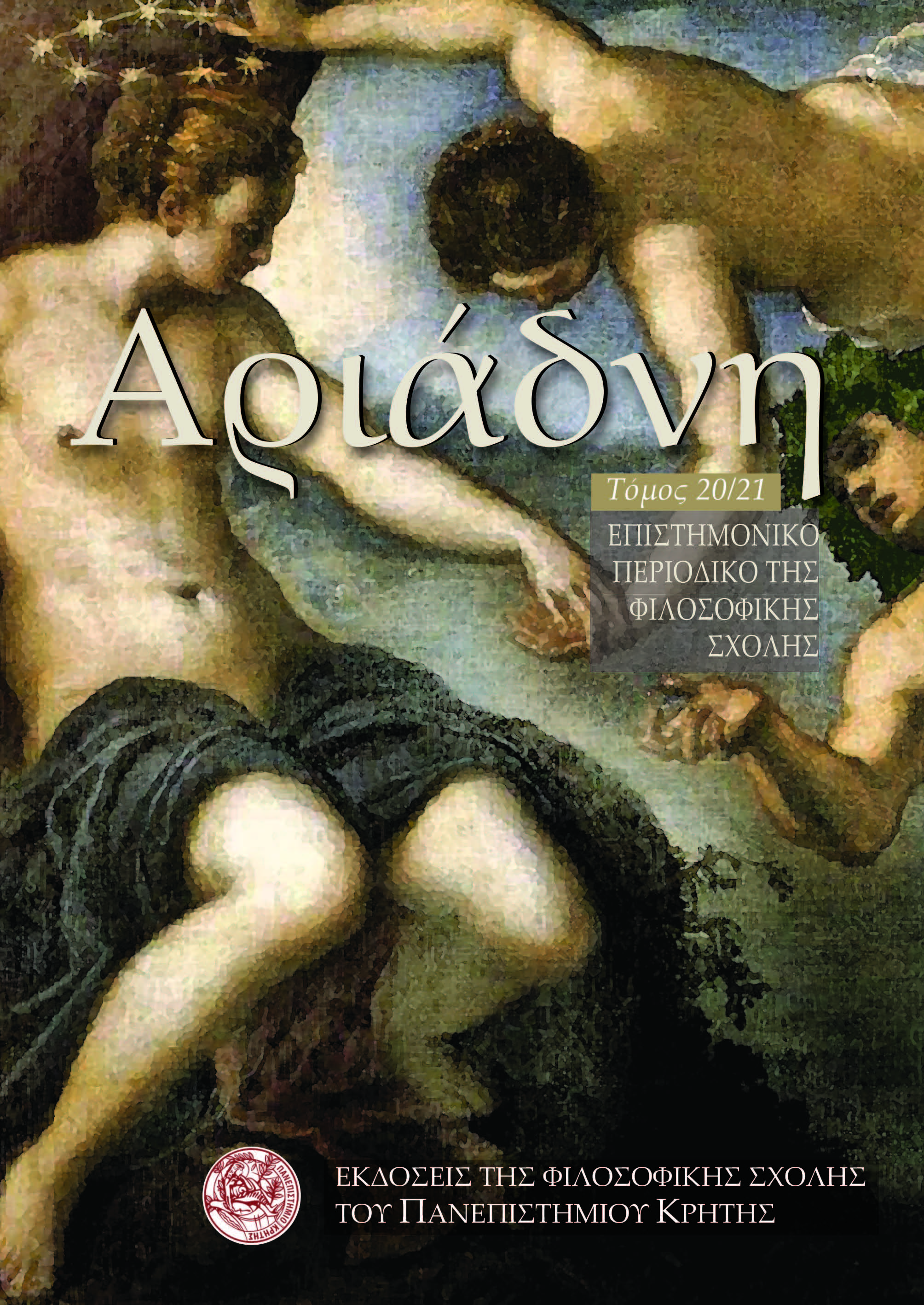Η Υπερβατολογική Αισθητική στον Καντ και στον Χούσερλ: εμπειρία, εννοιολόγηση, και θεωρητική γνώση
DOI:
https://doi.org/10.26248/ariadne.v0i20-21.219Περίληψη
IN HIS Transcendental Aesthetic Kant states the synthetic a priori forms of time and space as the conditions of possibility of sensible intuition. Husserl criticized that view accusing Kant of being unable to discern time and space as forms of sensibility from time and space as constituted forms of perception. He also found the Kantian approach improper to deal with the constitutive syntheses of primordial experience before the application of the categories of pure reason (which for Husserl yields only objects of thought, e.g. geometrical objects). Husserl’s Transcendental Aesthetic, on the other hand, is supposed to be the transcendental discipline that offers the a priori conditions for the constitution of primordial experience. With the present paper I intend to delineate the proper dimensions of such a discipline. For that purpose I first examine how the notion of a Husserlian Transcendental Aesthetic is being dealt with in the secondary literature and I show the inadequacy of the examined approaches. I focus my analyses on the core of primordial experience, namely the act of simple perception of natural things, and, based on Husserlian elements, I shed light on its pre-scientific, pre-conceptual and pre-predicative character. In view of those analyses I am then in the position to present Husserl’s Transcendental Aesthetic as a unified and coherent theory and to offer the basic elements concerning its depth, height and breadth.
Λήψεις
Δημοσίευση
Πώς να δημιουργήσετε Αναφορές
Τεύχος
Ενότητα
Άδεια
Οι εργασίες που δημοσιεύονται στο περιοδικό μπορούν να χρησιμοποιηθούν ελεύθερα για μη-εμπορικούς σκοπούς με την προϋπόθεση ότι γίνεται αναφορά στους συγγραφείς και την πρώτη δημοσίευση. Στην περίπτωση που το άρθρο αλλοιωθεί, τροποποιηθεί ή δημιουργηθεί κάτι νέο βασισμένο στο αρχικό, το έργο που θα προκύψει θα μπορεί να διανεμηθεί μόνο με την ίδια ή παρόμοια άδεια (Creative Commons Attribution-NonCommercial-ShareAlike 4.0 International License).


